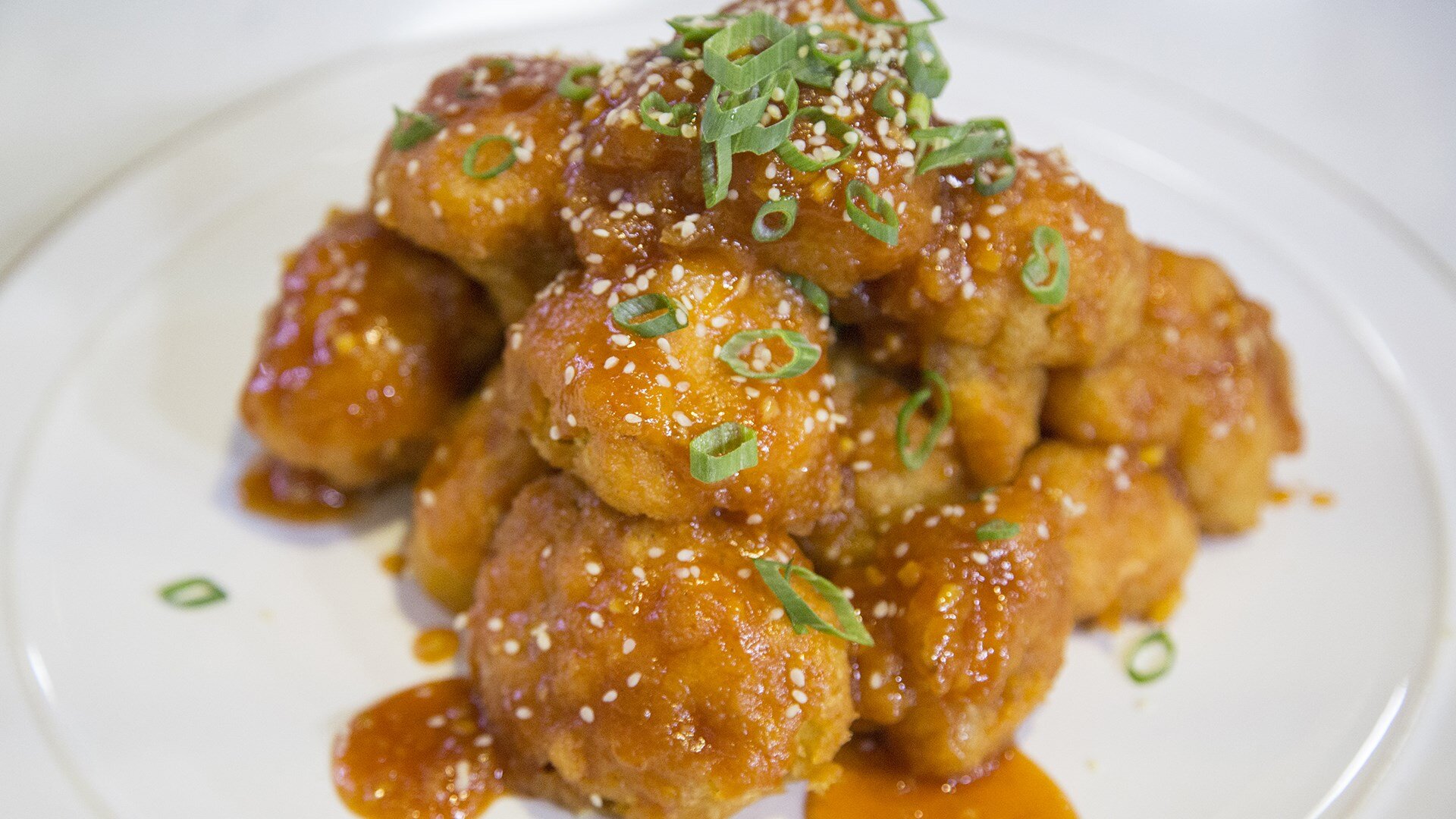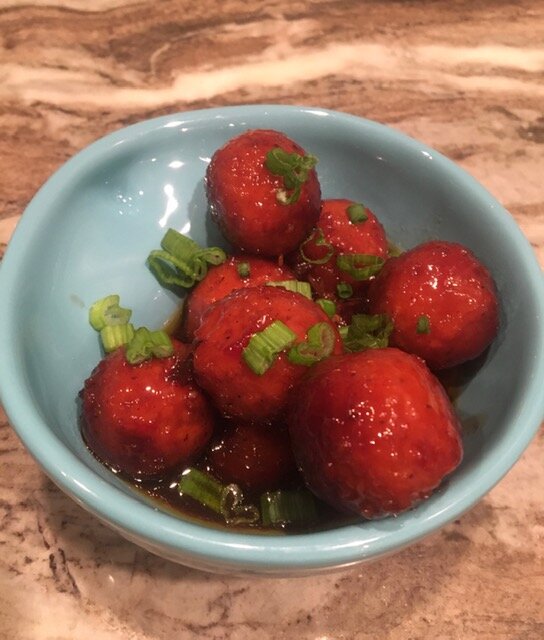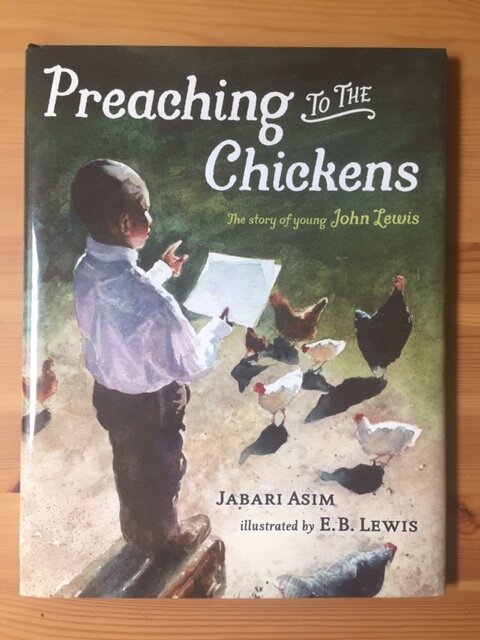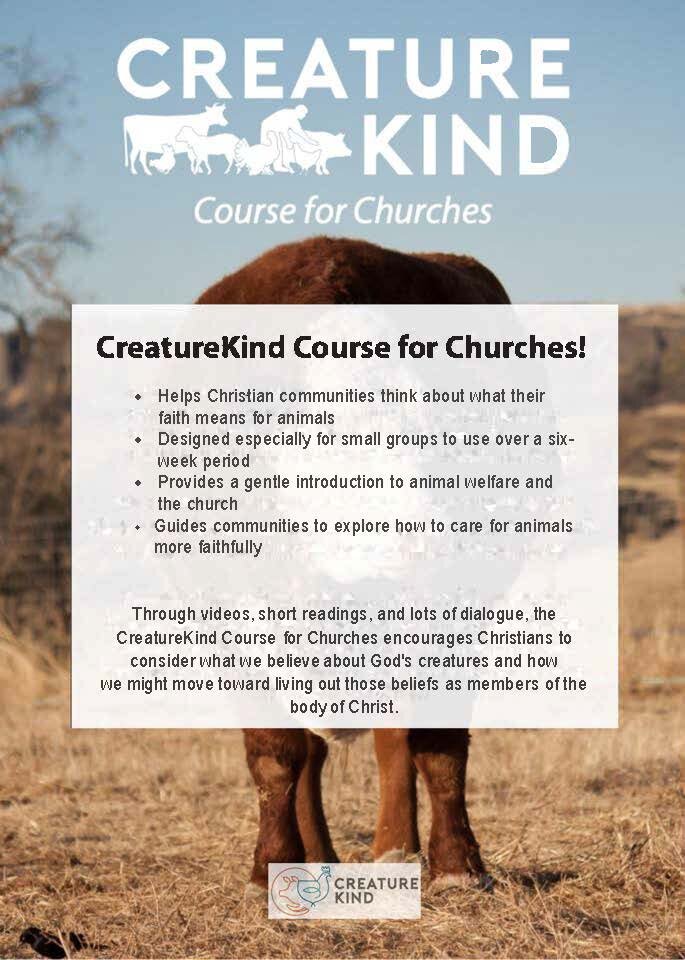I identify as Catholic, but until I began to study theology at a Jesuit university, I knew few other Catholics or practicing Christians my age. Among those vaguely familiar with Catholicism, a few common factoids floated around: we make a huge deal about “the holy wafer thing” at church (we do); women and queer people are restricted from taking on leadership roles (alas, usually true); we tend to have big families (at least historically); and—this was the most frequent one—we don’t eat meat on Fridays during Lent.
For me, already an herbivore from the time I was old enough to begin fasting, this last one didn’t seem like a big deal. (It did provoke a few theological debates about whether or not Gardein chickenless chick’n nuggets, being made of plants, were acceptable Friday fare.) But I became increasingly aware that, to both Catholic and non-Catholic/Christian acquaintances alike, abstaining from meat was something unusual, something that set our tradition apart.
I’ve been interested to discover that when you ask Catholics what this practice is all about, few are able to articulate a reason right away. Among those who attempt to, you get a wide variety of answers, some of them slightly unsettling. “It’s an act of self-discipline.” “It’s a way to remember your total dependence on God to provide for your needs.” “It’s a reminder that the mind and soul are more important than the body.” “It’s a way of respecting Christ’s ‘flesh sacrifice’ by not partaking in other ‘flesh sacrifices.’” “It’s a means of practicing obedience to the Church!” “I’m not sure, I’m not even really Catholic anymore, but my Irish grandmother would be horrified if I didn’t do it.”
Strangely, no one thinks to suggest that we are fasting from an everyday act of violence and indifference: towards animals, towards creation, towards our neighbors. If they did, we might begin to ponder why we only do this for a few days out of the year.
As an animal lover by nature, and an environmental scientist by training, I have always been frustrated by my church’s lack of engagement with animal protection and environmental justice. The Catechism of the Catholic Church goes so far as to argue that “we can name God only by taking creatures as our starting point,” suggesting that each individual animal being and species, constantly upheld by the love, care, and affection of their Creator, is a unique manifestation of God’s presence and characteristics. (1) It repeatedly describes animals and other forms of nonhuman creation as living revelation, imploring Catholics to remember that animals have their own purpose, value, and trinitarian destiny entirely apart from their “usefulness” to human beings. It emphasizes on multiple occasions that it is “contrary to human dignity to cause animals to suffer or die needlessly,” and preaches that animals should be treated with kindness, mercy, and restraint—both for their own sake, and because of their relationship with the Creator. (2) And, as we know—as governing bodies like the UN and IPCC are all but begging us to realize—our exploitation of animals on an industrial scale has devastating consequences for our health and the health of our planet. (3)
What does fasting mean if after we celebrate Christ’s resurrection we return to the daily sacrificing and killing of animal bodies—an endless Good Friday for God’s revelatory, beloved nonhuman creation?
A parable of sorts: I worked for a while as an administrative assistant at my Jesuit Catholic university, doing general office work and helping prep for catered business events. While almost all of the school’s student gatherings were vegan or vegetarian events, apparently our sustainability scruples got set aside for faculty, donor, and board meetings, which always involved at least one kind of meat or fish: steak, ham, or various kinds of poultry. I was always bothered by this inconsistency, but conscious of the fact that I was an easily replaceable student worker, not in a good position to contest the higher-ups’ menu choices.
Less than forty-eight hours before once such dinner was to take place, I was cc’d on an email saying that the catering order needed to be redone: since it was Ash Wednesday, the faculty could not eat meat, so would it be possible to replace the chicken with salmon, please?
I would like to think that twenty-odd portions of chicken did not go to waste that night, that these creatures were not slaughtered and butchered just to end up in a dumpster, unused, in a city in which almost twenty percent of residents are food insecure—all in the name of a more “appropriate” fish dinner. (4)
I would like to think that. Unfortunately, I don’t think that was the case.
And it’s not just animal creation that suffers because of our shortsightedness around food.
On March 2, 1980, less than a month before he was murdered while saying Mass, the Salvadoran martyr and saint Monseñor Óscar Romero proclaimed from the pulpit: “Lenten fasting is not the same thing in those lands where people eat well as is a Lent among our third-world peoples, undernourished as they are, living in a perpetual Lent, always fasting.” (5) In the global north, we have normalized the fact that our food consumption (of animal products and otherwise) comes at the cost of oppression and injustice elsewhere. In San Romero’s native Central America, for example, the United States helped plan and execute a 1954 coup overthrowing Guatemala’s democratically elected president, sparking a civil war in which 200,000 Guatemalan people, primarily indigenous citizens, were killed. Why? The US desire for cheap tropical fruit. The Guatemalan president had proposed land reforms which would have threatened the global fruit conglomerate United Fruit Co., now known as Chiquita Brands International. (6) In South America, cattle ranching, largely driven by the US demand for cheap beef, is currently the leading cause of deforestation in every single Amazon country. This demand accounts for 80% of deforestation rates as of 2015 with devastating consequences for indigenous communities whose land is polluted, burned, deforested, and even seized outright for ranchland. (7)
Many of us live a “perpetual Lent” in wealthy countries as well, forced into frequent fasting by income inequality, increasing cost of living, and lack of access to nutritious food. A few blocks to the south of our graduate theological campus lies the University of California, Berkeley, arguably one of the most well-regarded universities in the nation. Even pre-pandemic, 44% of undergraduate students and 26% of graduate students in the UC system described themselves as food insecure, meaning they had to eat less, or experienced periods of disrupted eating, due to a lack of resources. (8) In Alameda County more broadly, at least one in five people source food from food banks in order to make ends meet. Two thirds of food bank clients are children and seniors, and communities of color are disproportionately impacted by hunger and food insecurity. Nationwide, households of color, especially Black and Latinx households, are approximately twice as likely to experience hunger as white households. (9)
What does fasting mean, when our everyday meals come at the cost of colonialism, imperialism, oppression, starvation?
What does fasting mean, in the midst of so much hunger and injustice?
Pondering all of this, I can’t help but come to the conclusion that we must radically reimagine what we think of as “fasting,” seeking to rediscover the spirit of the act rather than just conforming to established practice. The Bible and its many prophets and visionaries model this for us. On the first Friday of Lent, we hear the words of Isaiah 58:
Lo, on your fast day you carry out your own pursuits,
and drive all your laborers.
Yes, your fast ends in quarreling and fighting,
striking with wicked claw.
Would that today you might fast
so as to make your voice heard on high!
Is this the manner of fasting I wish,
of keeping a day of penance:
That a man bow his head like a reed
and lie in sackcloth and ashes?
Do you call this a fast,
a day acceptable to the LORD?
This, rather, is the fasting that I wish:
releasing those bound unjustly,
untying the thongs of the yoke;
Setting free the oppressed,
breaking every yoke;
Sharing your bread with the hungry,
sheltering the oppressed and the homeless;
Clothing the naked when you see them,
and not turning your back on your own.
Then your light shall break forth like the dawn,
and your wound shall quickly be healed;
Your vindication shall go before you,
and the glory of the LORD shall be your rear guard.
Then you shall call, and the LORD will answer,
you shall cry for help, and he will say: Here I am!
What strikes me is that the prophet changes the paradigm from restriction to liberation—from an individual experience of mourning and penance to a communal project of change, healing, and solidarity. Our Lenten requirement is not sackcloth, ashes, and self-denial, but the explicit challenge not to deny or ignore our neighbors, human and nonhuman—“not turning our back on our own.”
Father Greg Boyle, SJ, writes:
Jesus, in Matthew’s Gospel, says, ‘How narrow is the gate that leads to life.’ Mistakenly, I think, we’ve come to believe that this is about restriction. The way is narrow. But it really wants us to see that narrowness is the way […] Our choice is not to focus on the narrow, but to narrow our focus. The gate that leads to life is not about restriction at all. It is about an entry into the expansive. (10)
What could fasting mean, if undertaken as part of an expansive community of creation? A community of solidarity directed towards a shared vision of justice? A community dedicated not just to “restricting” ourselves or abstaining from evil things for a few Fridays each year, but instead dedicated to breaking down structures of sin and replacing them with new patterns of love, equity, and justice?
Speaking for myself, I am coming to see the act of fasting not so much as a temporary “opt-out” of the daily luxuries to which we’ve become accustomed, but as a daily “opt-in” to new choices, new ways of being, which build and strengthen bonds of connection and mutual love. Lent, then, becomes a privileged season to put into practice our responsibility to our fellow worshippers of the Creator, human and nonhuman alike, so that we may daily live the resurrection for which we’re preparing. Fasting from injustice helps us to prepare a glorious feast of liberation, justice, and love, to be shared and celebrated with all of creation.
As individuals, and as a Church, we have a lot of work to do. We will need radical change in our power structures, our praxis, our ways of relating to one another. We will need an ethics of solidarity and inclusion, casting aside discriminatory practices, making reparation to those we have harmed. It will not be an easy task. But it is undoubtedly a worthy one, and can even be a joyful one, through which we might become a people that can be known and know themselves, in the words of Tertullian, by how they love one another.
























